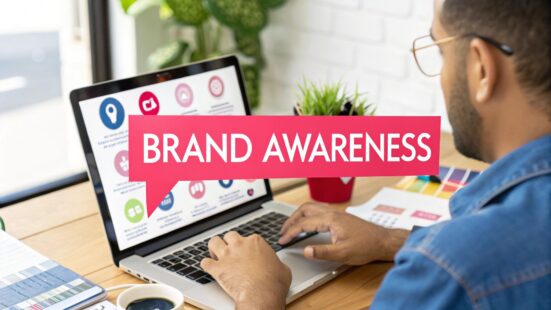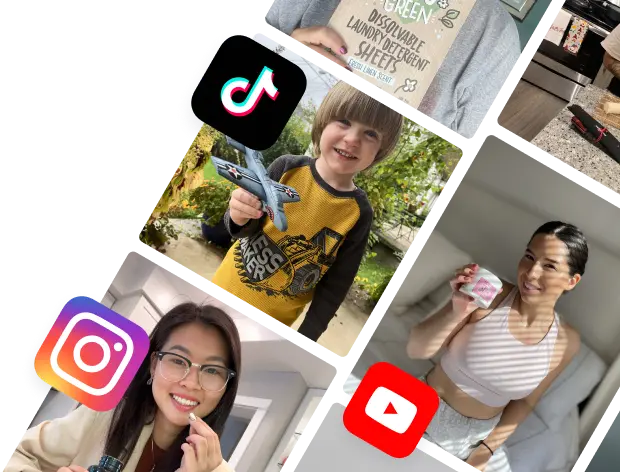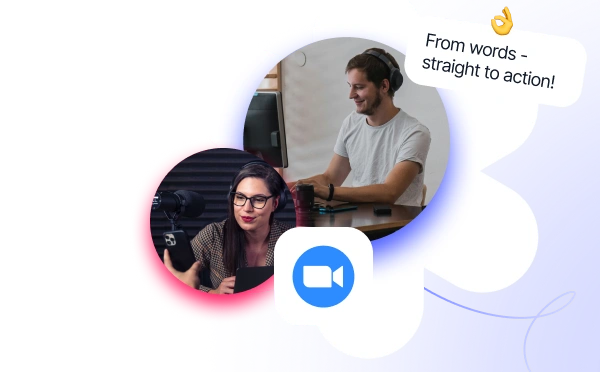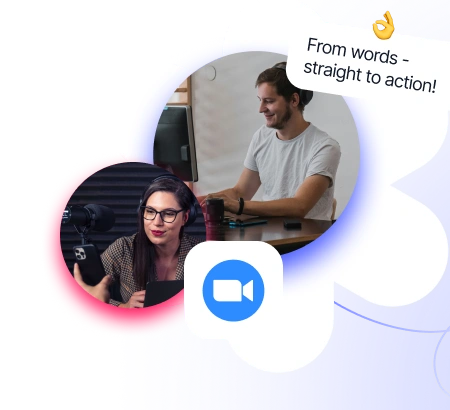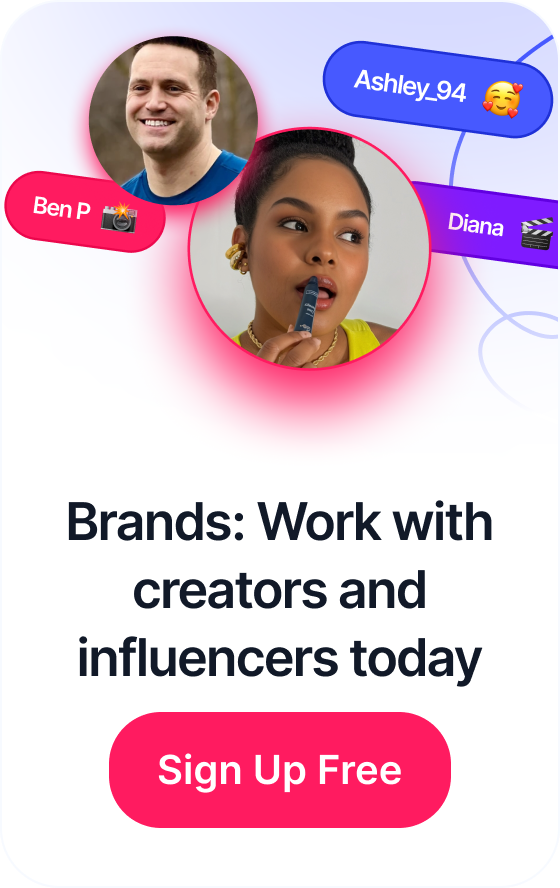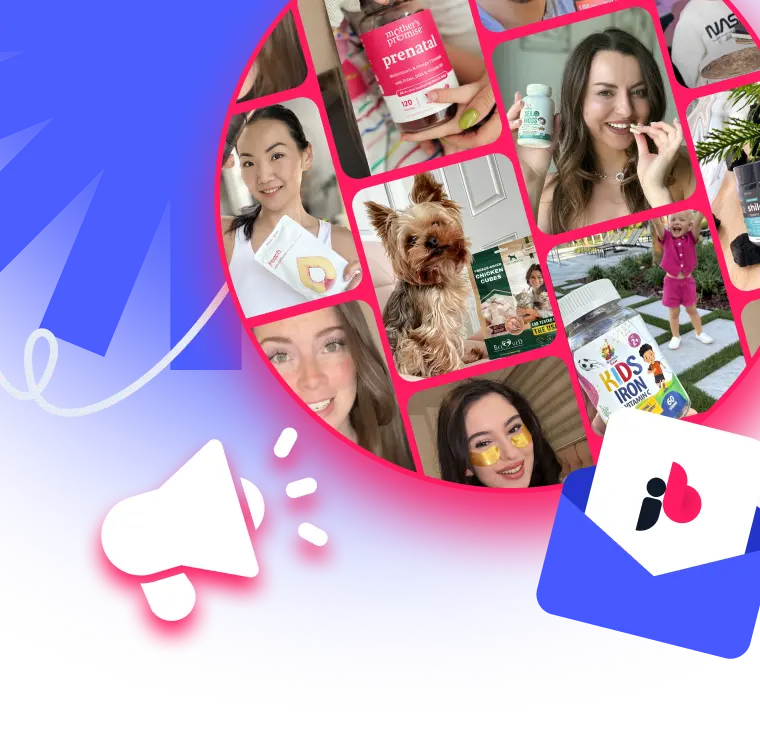 How to Scale Content Creation: Proven Strategies to Grow
How to Scale Content Creation: Proven Strategies to Grow
To really grow your brand’s presence on social media, you need a smart game plan paired with consistently great content. This isn't just about selling; it's about getting to know your audience, carving out a unique voice for your brand, and then creating posts that genuinely entertain, teach, or inspire them.
Success comes down to showing up where your audience hangs out online and starting real conversations.
Table of Contents
Building Your Brand Awareness Foundation
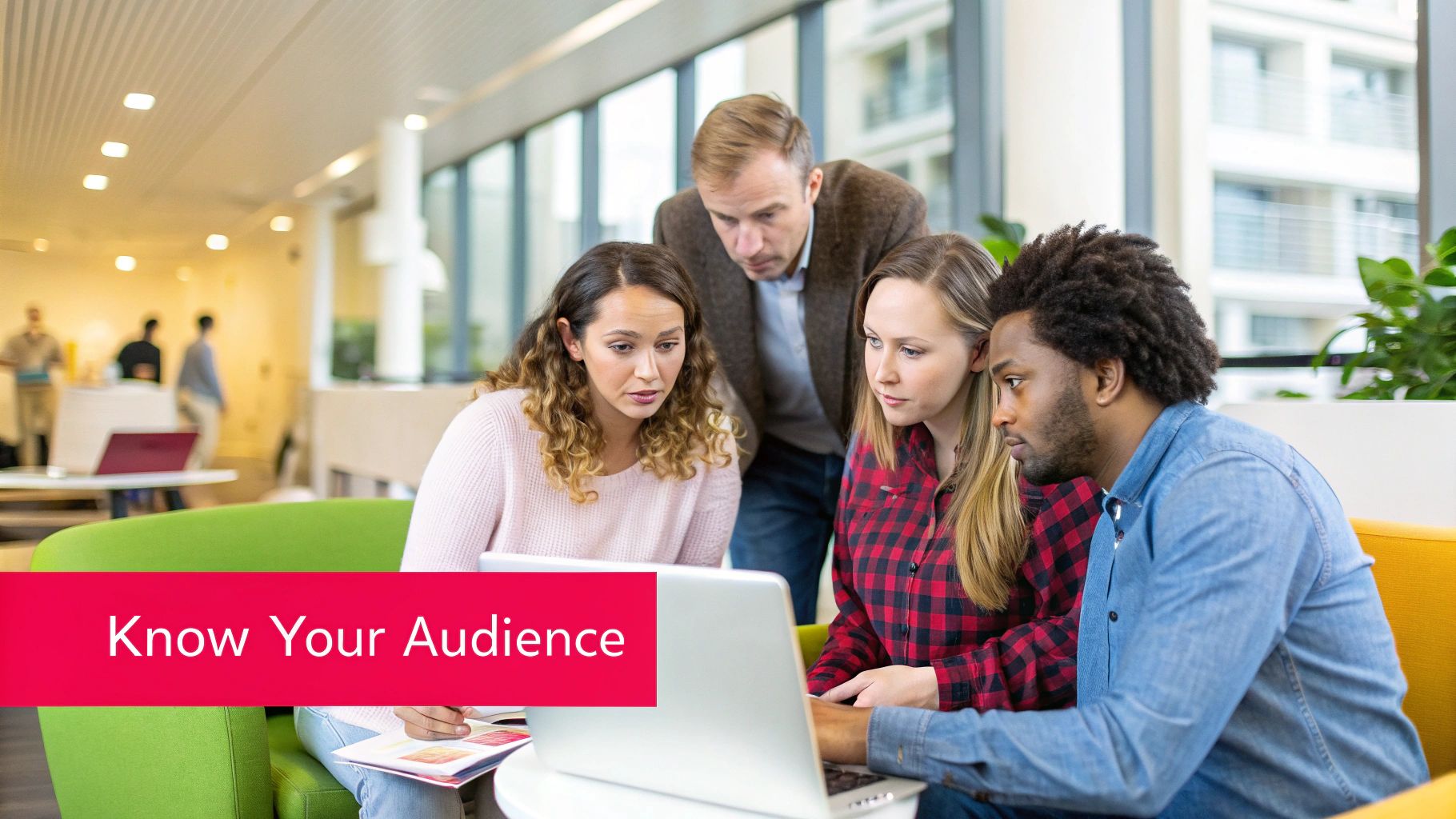
Before you even think about your first post, you have to lay the groundwork. Jumping onto social media without a clear strategy is like trying to build a house without a blueprint—you’ll end up wasting time, money, and a whole lot of effort for messy results. This foundational work is what shifts you from just posting randomly to executing a deliberate, high-impact plan.
First things first, you need to nail down your brand's voice and personality. Are you the witty, sarcastic friend like Wendy's on Twitter? Or are you the helpful, authoritative expert like HubSpot? This voice is everything. It shapes your captions, your comment replies, and your visual style, making sure every single interaction feels like it's coming from the same authentic place.
Define Your Audience and Their Digital Habits
Next up: who are you actually talking to? You have to go way beyond basic demographics like age and location. The real gold is in understanding their mindset and online behavior.
You need to figure out:
- How they consume content: Are they glued to short, snappy TikToks, or do they prefer digging into detailed articles on LinkedIn?
- Where they hang out: A B2B software company will probably find its people on LinkedIn, while a fashion brand’s audience is almost certainly scrolling through Instagram and Pinterest.
- Their pains and passions: What problems keep them up at night? What topics get them fired up? Your content needs to connect with these core drivers.
Getting this deep audience insight is non-negotiable. Diving into some essential user research methods is a great starting point to gather real, actionable data. This research is what stops you from just shouting into the void and ensures your message actually hits home.
Your brand voice is the personality of your business, and your audience understanding is its compass. Together, they guide every piece of content, ensuring your message not only reaches people but also sticks with them for the right reasons.
This strategic approach forms the backbone of great brand storytelling. When you truly understand your brand's story and your audience's world, you can build a social media presence that’s not just seen, but remembered.
To help you get started, here's a quick look at the foundational elements every successful brand awareness strategy needs to succeed on social media.
Core Pillars for Social Media Brand Awareness
| Pillar | Objective | Key Actions |
|---|---|---|
| Audience Insight | To deeply understand who you're talking to. | Develop detailed personas, analyze social media demographics, conduct surveys, and monitor online conversations. |
| Brand Voice | To establish a consistent and recognizable personality. | Define a tone and style guide, create a list of "do's and don'ts," and train your team to write in that voice. |
| Platform Strategy | To be active where your audience is most engaged. | Research platform demographics, identify 2-3 core platforms to focus on, and tailor content for each one's unique format. |
| Content Pillars | To create a reliable stream of relevant, valuable content. | Identify 3-5 core topics that align with audience interests and brand expertise, then brainstorm ideas within each pillar. |
| Visual Identity | To create a cohesive and professional look. | Establish brand colors, fonts, and logo usage guidelines. Use templates to ensure visual consistency across all posts. |
Getting these pillars right from the start makes everything that follows—from content creation to community management—infinitely more effective. It's the difference between guessing and executing with confidence.
Crafting a High-Impact Content Strategy

If your social media foundation is the frame of the house, your content is everything inside it—the stuff that makes people want to stick around. Just scheduling a bunch of promotional posts is a surefire way to get ignored. The real goal is to build a content engine that actually helps people, makes them laugh, and creates a genuine community.
You want to be the account people look forward to seeing, not the one they scroll past. That means shifting your mindset from selling all the time to serving your audience. When you get that right, you’ll have a clear path for how to increase brand awareness on social media.
Finding Your Perfect Content Mix
Think of your social feed like a conversation. If you only talk about yourself, people are going to tune out. Fast. You need a healthy mix of different content types to keep things interesting and provide real value.
A great place to start is blending these four pillars:
- Educational Content: This is your chance to be the expert. Think tutorials, how-to guides, and industry hot takes that position you as the go-to resource. A skincare brand, for example, could drop a quick Reel on the right way to layer serums.
- Entertaining Content: Let your brand’s personality shine! Memes, relatable humor, and behind-the-scenes peeks make you more human. Imagine a local coffee shop sharing a hilarious clip of a barista’s latte art fail. It’s relatable and real.
- Inspirational Content: This is all about building an emotional connection. We're talking user-generated content (UGC), customer success stories, and motivational posts. Sharing a glowing review from a customer (with their permission, of course) is powerful social proof.
- Promotional Content: Yes, you still need to talk about your products and offers. The trick is to weave these posts in naturally with your other content instead of having them stick out like a sore thumb.
Don’t just sell—serve. Your content should solve a problem, answer a question, or just bring a smile to someone’s face. When you lead with value, the sales have a funny way of following.
The Undeniable Power of Video
Let's be clear: video isn't just "nice to have" anymore. It's essential. In a sea of static posts, video is the thing that grabs someone's attention and shows off your brand's vibe in a way a picture just can't.
And the data doesn't lie. A whopping 78% of consumers prefer finding new products through short-form video. This isn't just a fleeting trend; it’s a fundamental shift in how people consume content, and the platform algorithms have definitely taken notice.
The key is to use different video formats for different goals.
Strategic Video Formats to Use
| Format | Best For | Example Scenario |
|---|---|---|
| Stories & Reels | Grabbing immediate attention and showing brand personality. | A clothing boutique uses Instagram Stories to run a quick poll on which new dress to stock next, creating instant engagement. |
| Short-Form (TikTok) | Participating in trends and reaching a broad, new audience. | A tech startup creates a TikTok showing a "day in the life" of an engineer, set to a trending audio clip. |
| Long-Form (YouTube) | Building authority and providing in-depth value. | A financial services firm posts a 15-minute YouTube video explaining complex investment strategies in simple terms. |
As you dive deeper into video, you'll want to know what's resonating with your audience. For a platform like Instagram, digging into who’s watching your content with a tool like an Instagram Story Viewer can give you some serious clues about what's working and what's not.
By embracing a multi-format video strategy, you give yourself more shots on goal to connect with your audience in the way they prefer.
Choosing the Right Platforms for Maximum Impact
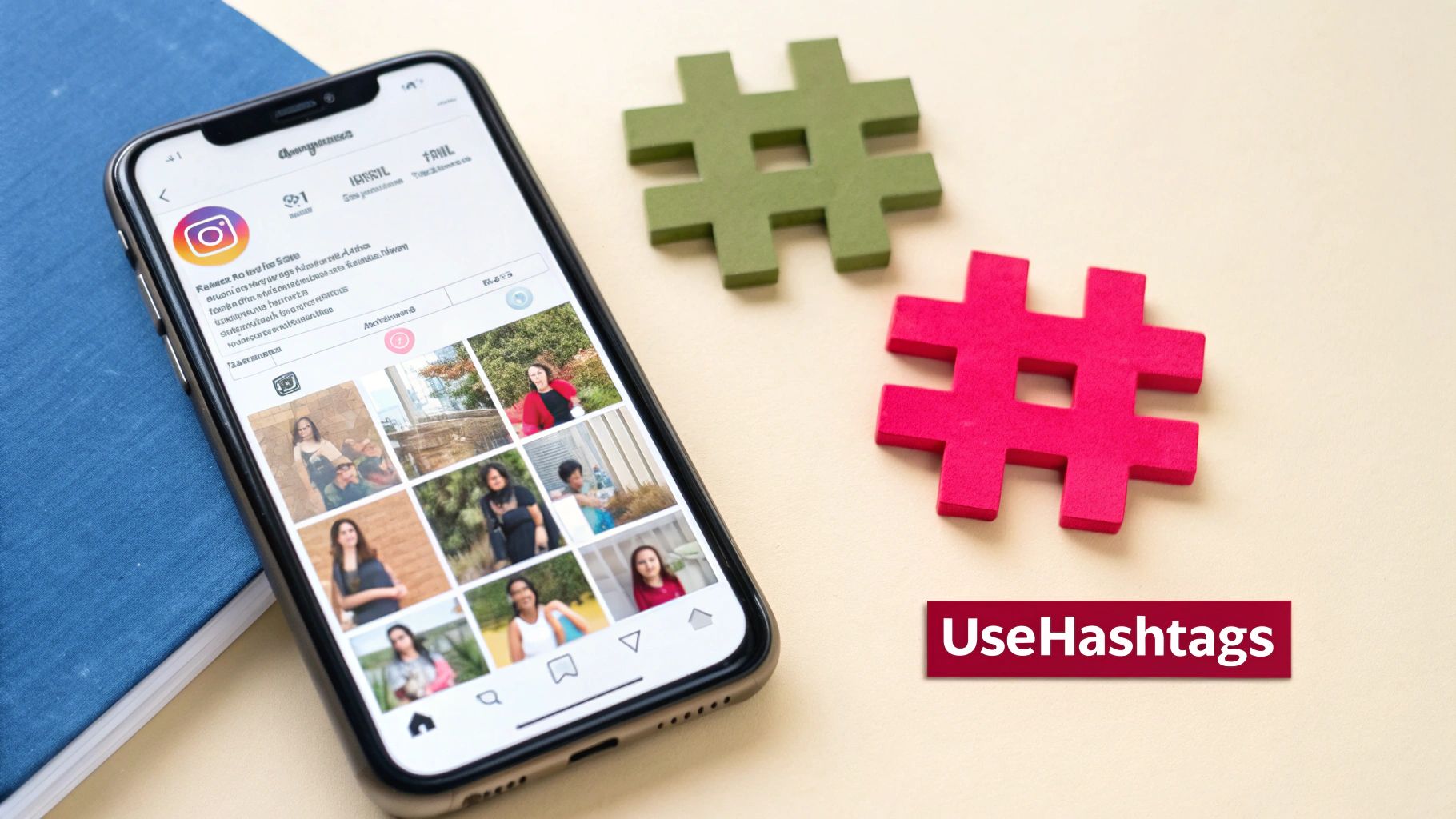
Spreading your brand thin across every social platform is a recipe for burnout, not awareness. The key is to be surgical. You need to show up where your audience already is, not where you think they should be.
Think of it this way: you wouldn't cast a net for deep-sea tuna in a shallow mountain stream. The same logic applies here. The tactics that kill it on LinkedIn will fall completely flat on TikTok. Picking the right channels means your energy and resources are focused for the biggest possible return.
Align Your Brand with Platform Culture
First things first, you have to match your brand’s personality with the right platform's vibe. Trying to force a stuffy, corporate brand onto a playful platform like TikTok just feels awkward and inauthentic. It's a waste of everyone's time. Focus your efforts where your brand can thrive naturally.
A sophisticated B2B software company, for example, will almost certainly find its best audience on LinkedIn. That's where the conversation is professional and the content is geared toward industry insights. Their long-form articles and deep-dive case studies will fit right in.
On the flip side, a direct-to-consumer (DTC) lifestyle brand selling vibrant home decor would be a natural on the visual-first worlds of Instagram and Pinterest. These platforms are built for aesthetics and discovery, making them the perfect place to show off beautiful product shots and user-generated content.
Don’t just pick a platform based on its user count. Pick it based on the user's mindset. Ask yourself, "Why are people here? To be entertained, educated, or to network?" Answering that is half the battle.
Visual Platforms for Discovery and Engagement
For brands in spaces like fashion, food, travel, and beauty, visual platforms are non-negotiable. Instagram, in particular, is still an absolute powerhouse for discovery and a critical piece of the puzzle when you're figuring out how to increase brand awareness on social media.
The platform is designed for visual storytelling. It lets you build a powerful brand aesthetic through a curated feed, punchy Reels, and interactive Stories. Just look at how a visually-driven brand like National Geographic uses its feed to tell a story.
This screenshot shows a cohesive grid with stunning, high-quality images that instantly communicate the brand's focus on nature and exploration.
But it’s not just about pretty pictures. Instagram is a major hub for product research. It's home to roughly 2 billion users, and about 62.3% of them use the platform specifically to research brands and products. That makes it an incredibly valuable channel for connecting with people while they're actively making buying decisions. You can find more insights like this on social media marketing trends over at Dreamgrow.
Where Different Platforms Shine
To make the right call, you need to know the primary function and audience of each major platform. This isn't an exhaustive list, but it’s a solid strategic starting point:
- LinkedIn: The undisputed king for B2B brands, thought leadership, and professional networking. It's the place for industry reports, company news, and expert articles.
- TikTok: Perfect for brands targeting Gen Z and millennials. It’s all about fun, authentic, and trend-driven short-form video.
- X (formerly Twitter): Excels at real-time updates, quick customer service chats, and jumping into timely industry conversations. Think short, sharp, and to the point.
- Pinterest: A visual discovery engine where users are actively planning purchases. This is a goldmine for brands in home decor, recipes, fashion, and DIY.
Amplifying Your Reach with Strategic Partnerships
Creating killer content is a huge piece of the puzzle, but let's be real—if you want to truly scale your brand's presence, you need to tap into existing, engaged communities. You can't just build it and hope they come.
This is where strategic partnerships completely change the game. By collaborating with the right people and brands, you get to borrow their hard-earned credibility and introduce your brand to a warm, receptive audience that already trusts them.
It's about so much more than just a one-off promotional post. The collaborations that really move the needle are built on shared values and genuine authenticity, making the partnership feel natural to everyone involved. This is how you fast-track your efforts on how to increase brand awareness on social media.
The infographic below breaks down a simple, repeatable process for building successful influencer partnerships from the ground up.
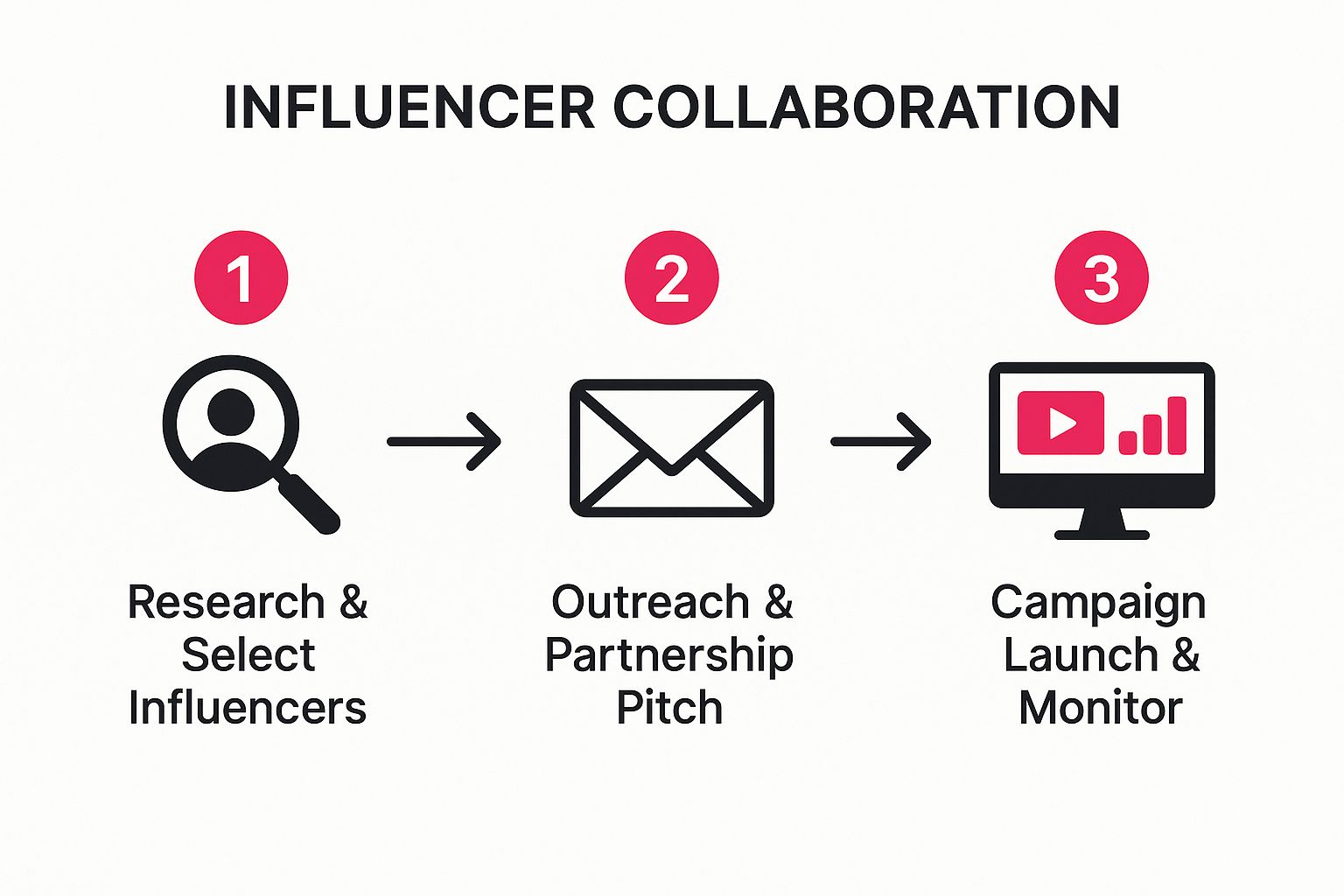
As you can see, the best campaigns are systematic. It's a flow that moves from careful selection and vetting to a collaborative launch and, finally, diligent monitoring to see what's working.
Finding the Right Influencers for Your Brand
Not all influencers are created equal, and honestly, bigger isn't always better. The real secret is finding creators whose audience and values are a perfect match for your brand. Kicking things off means understanding the different tiers of influencers you can work with.
You'll generally run into three main categories:
- Macro-Influencers (100K+ followers): These are the heavy hitters. They offer massive reach, which makes them great for big, top-of-funnel awareness campaigns. Think of a major fitness personality promoting a new line of protein supplements.
- Micro-Influencers (10K-100K followers): This is often the sweet spot. Micro-influencers typically have a more niche, highly-engaged community that implicitly trusts their recommendations.
- Nano-Influencers (1K-10K followers): Don't let the smaller audience size fool you. Nano-influencers pack a punch with incredible authenticity and hyper-local influence. They're perfect for targeted, community-focused campaigns.
The data backs this up, especially when it comes to focusing on smaller, more dedicated communities. For example, micro-influencers on Instagram pull in an average engagement rate of 3.86%. That blows the 1.21% seen by their macro counterparts out of the water.
These campaigns also make financial sense, delivering an average $5.78 in earned media value for every dollar spent.
The best influencer partnerships don't feel like ads. They feel like a trusted friend recommending a product they genuinely love. Prioritize alignment and authenticity over sheer follower count every single time.
Expanding Beyond Influencer Marketing
While influencer marketing is a cornerstone of any good partnership strategy, don't stop there. Overlooking other powerful collaborations, like brand-on-brand partnerships, means you're leaving a ton of opportunity on the table.
Think about it: a specialty coffee roaster could team up with a local artisanal bakery for a joint giveaway. Both brands share a similar customer—someone who appreciates quality, handcrafted goods—but they aren't direct competitors.
By co-hosting a contest or creating content together, they effectively introduce their loyal followers to another brand they're almost guaranteed to love. These collaborations work because they're built on mutual benefit and shared audience values. In fact, understanding the core benefits of influencer marketing provides a fantastic framework for structuring any type of collaborative campaign.
No matter who you're partnering with, successful outreach requires a personal touch. Ditch the generic, templated messages. Instead, reference specific content of theirs you enjoyed, explain why you believe the collaboration is a perfect fit for both of your audiences, and be crystal clear about the value you're bringing to the table.
Measuring the Metrics That Actually Matter
Let’s be honest. Posting cool content and chatting with your community feels good, but if you aren’t measuring anything, you’re just guessing. To really know if your efforts are paying off, you have to look past the flashy vanity metrics like follower counts and focus on the numbers that signal real growth.
This is how you prove your ROI. Tracking the right data is what gets you bigger budgets and a seat at the strategy table. It's about telling a clear story about who you're reaching and what they actually think of your brand.
Beyond Likes and Follows
It's tempting to get excited watching your follower count tick up, but that number doesn't tell you much on its own. What good is a huge following if most of them never see or engage with what you post? It’s time to prioritize the metrics that actually reflect visibility and attention.
These are the KPIs that show you’re genuinely breaking through the noise:
- Reach: This is your bread and butter. It’s the total number of unique people who laid eyes on your content. It’s the clearest measure of how far your message is traveling.
- Impressions: This number tracks how many times your content was displayed in a feed, period. High impressions mean the algorithm is serving up your content frequently, which is a great sign.
- Video View Metrics: Don't just look at total views. Dig into the 3-second views to see if your hooks are working and check the average watch time to know if you're holding their attention.
Think of these as your top-of-funnel signals. They're the first indication that your brand awareness strategy is on the right track. For a much deeper look into the analytics, our complete guide on how to measure content performance is a fantastic resource.
Gauging Your Brand’s Presence and Perception
Okay, so people are seeing your content. Great. The next question is, what are they saying? You need to understand how your brand fits into the wider social conversation.
True brand awareness isn't just about people knowing your name; it's about what they associate with it. Monitoring brand mentions and sentiment is crucial for understanding your reputation in real time.
This is where social listening becomes your superpower. You can use the built-in tools on most platforms or grab a third-party service to keep an eye on these crucial conversational metrics.
Key Conversational KPIs
| Metric | What It Measures | Why It Matters |
|---|---|---|
| Brand Mentions | The number of times your brand is mentioned, whether you're tagged or not. | Shows how often you're naturally part of the conversation. |
| Share of Voice | Your brand's mentions stacked up against your top competitors. | Puts your performance into context and shows where you stand in the industry. |
| Sentiment Analysis | The emotional vibe (positive, neutral, negative) of those brand mentions. | Gives you a qualitative look at how people actually feel about your brand. |
Tracking these metrics gives you a powerful, data-backed view of your brand’s health. You stop just shouting into the void and start truly understanding how your message is being received. This insight allows you to tweak your content, sharpen your messaging, and build a brand people don't just recognize, but genuinely like and respect.
Got Questions About Brand Awareness? We've Got Answers.
Jumping into the world of social media brand awareness always brings up a few common questions. We hear them all the time. Let's tackle some of the biggest ones head-on so you can get back to building your strategy with confidence.
How Much Should a Small Business Really Budget for Social Media?
There’s no magic number here, but a solid rule of thumb is to set aside 10-20% of your total marketing budget for social media. If you're just dipping your toes into paid ads, you don't need to break the bank. You can start small, think $10-$20 a day on a platform like Instagram or Facebook, just to see what kind of content gets people talking.
The real key? Consistency over a huge one-time splash. Pour your energy into creating killer organic content first. Once you spot a post that’s getting great traction, that’s when you put a little ad spend behind it to push it out to a bigger, more targeted audience. Once the data starts rolling in and showing you what drives results, you can start bumping up that budget without guessing.
What's the Best Social Media Platform for B2B Brand Awareness?
Everyone's immediate answer is LinkedIn, and for good reason—it’s the king of B2B networking. But stopping there is a huge missed opportunity. You're leaving potential customers on the table.
Think about it: X (formerly Twitter) is fantastic for jumping into real-time industry chats and sharing breaking news. Got a great webinar or a detailed product demo? YouTube is your best friend for building that kind of deep authority.
And don't sleep on Instagram for B2B. It’s the perfect place to pull back the curtain and show off your company culture, spotlight your amazing team, and share behind-the-scenes moments that make your brand feel human. The winning play is to use LinkedIn as your main hub for that polished, professional content, then use other channels to show off the different sides of your brand’s personality.
A multi-platform strategy isn't about being everywhere at once. It's about meeting different parts of your professional audience where they already are, whether they're looking for deep-dive analysis on LinkedIn or human-centric stories on Instagram.
How Long Does It Actually Take to See a Bump in Brand Awareness?
Let's be real: building brand awareness is a marathon, not a sprint. Sure, a post might go viral and give you a quick shot of visibility, but real, lasting recognition is built brick by brick, day by day. It comes from consistently showing up and engaging with your community.
Generally, if you’re putting out quality content, actively chatting with your followers, and running smart, targeted campaigns, you should start seeing some real momentum within three to six months. Look for steady growth in metrics like reach, follower count, and brand mentions.
The trick is to track your progress every month. This isn’t just for vanity—it’s to see what’s connecting and what’s not, so you can tweak your approach. You're aiming for steady, long-term growth, not a one-hit wonder.
Ready to scale your social presence with authentic content? JoinBrands connects you with over 250,000 creators to produce high-impact UGC that drives real results. Find the perfect partners for your next campaign and start amplifying your brand today at https://joinbrands.com.
